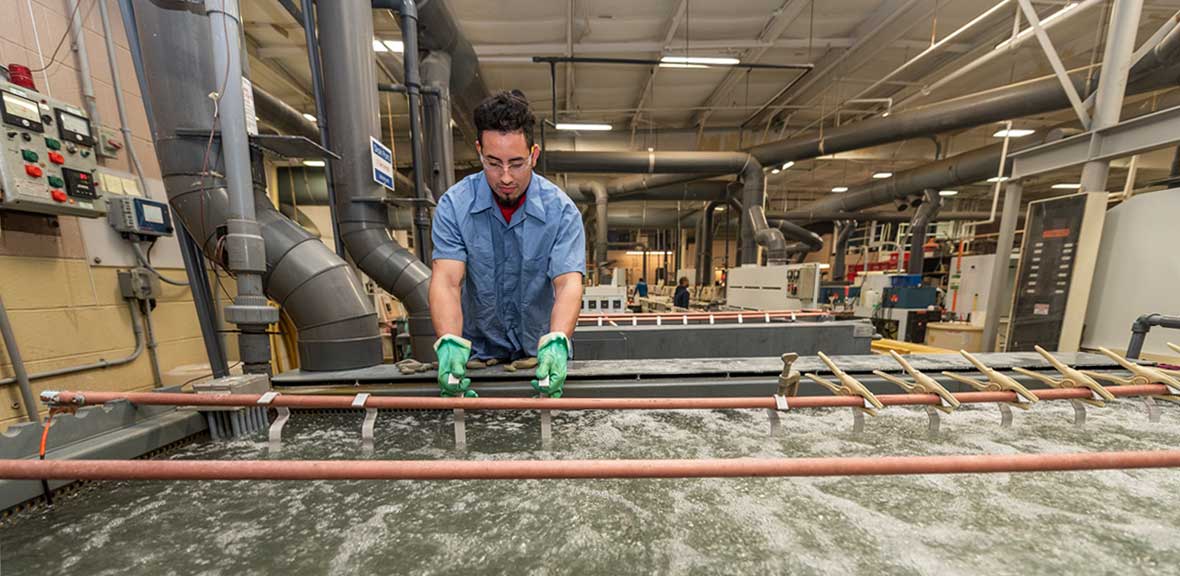Project Description
Anodizing
At Plating for Electronics, we have been providing consistent, high quality anodize finishes for the electronics, medical, aerospace and optics industries or any manufacturer of aluminum components. Anodizing is one of the most cost effective aluminum finishing methods providing corrosion and wear resistance as well as the desired aesthetic for your parts. Our team performs both type II and type III hardcoat anodizing treatments in our modern facility.
Our over 50 years of experience perfecting the art and science of anodizing enable us to complete even the most complex jobs on-time and with precision.

Our expertly trained lab technicians ensure that your finished product upholds both the universal standards and our own rigorous standards.
At Plating for Electronics, we can deliver a custom anodizing solution to address your specific application. Call us today at 781.893.2368 or email info@p4e.com to explore your options with our friendly staff today.
Anodizing
MIL-A-8625 Type II class 1 (non dyed)
MIL-A-8625 Type II class 2 (dyed)
MIL-A-8625 Type IIB
ASTM B580 Type B thru F
Anodizing is performed to develop a layer of natural oxide on aluminum. This process provides your components with a non conductive coating that will enhance corrosion resistance and wear as well as provide color if desired. Choose from a wide range of standard colors with the availability of additional special order colors.
A note about color:
Although a wide variety of colors are available, exact matching to a pantone or federal standard is not generally possible. These standards are largely only applicable to inks or paints, however, they can be a useful tool to approximate dye for the closest match available. Due to multiple varying factors in anodizing, there will always be some variation in color from lot to lot.
Hardcoat Anodize
MIL-A-8625 Type III class 1 (non dyed)
MIL-A-8625 Type III class 2 (dyed)
MIL-A-63576 Type I
Hardcoat anodize provides a denser, thicker coating commonly used when increased wear and corrosion resistance is required. The coating can be dyed, with black being the most common color. Other colors are available however, they will be darker and less vibrant due to the darker color of the natural oxide. Typical thickness range is .0005 – .002 with .002 being the default. Sealing is standard on dyed coatings and available on non dyed coatings. We offer nickel acetate, sodium dichromate and boiling deionized water seal. PTFE Teflon application is also available.
